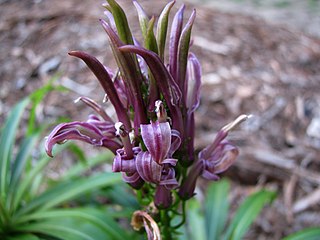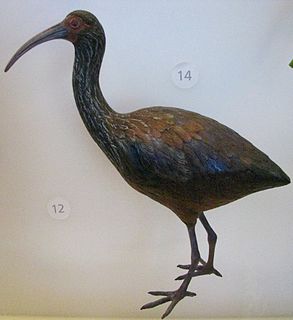
Molokaʻi, anglicized as Molokai, is known under several names by the local indigenous population: Molokaʻi ʻĀina Momona (meaning land of abundance, Molokaʻi Pule Oʻo, and Molokaʻi Nui A Hina. Molokaʻi is the fifth most populated of the eight major islands that make up the Hawaiian Islands archipelago in the middle of the Pacific Ocean. It is 38 by 10 miles in size at its extreme length and width with a usable land area of 260 square miles, making it the fifth-largest of the main Hawaiian Islands and the 27th largest island in the United States. It lies east of Oʻahu across the 25-mile wide Kaʻiwi Channel and north of Lānaʻi, separated from it by the Kalohi Channel.

The Hawaiian people practiced aquaculture through development of fish ponds, the most advanced fish husbandry among the original peoples of the Pacific. These fishponds were typically shallow areas of a reef flat surrounded by a low lava rock wall built out from the shore. Several species of edible fish thrive in such ponds, and Hawaiians developed methods to make them easy to catch.
The Oahu thrush or ʻāmaui was a bird in the genus Myadestes. Endemic to the island of Oahu, it was the first of its genus to become extinct, c. 1850.

The Hawaiian lobelioids are a group of flowering plants in the bellflower family, Campanulaceae, all of which are endemic to the Hawaiian Islands. This is the largest plant radiation in the Hawaiian Islands, and indeed the largest on any island archipelago, with over 125 species. The six genera can be broadly separated based on growth habit: Clermontia are typically branched shrubs or small trees, up to 7 metres (23 ft) tall, with fleshy fruits; Cyanea and Delissea are typically unbranched or branching only at the base, with a cluster of relatively broad leaves at the apex and fleshy fruits; Lobelia and Trematolobelia have long thin leaves down a single, non-woody stem and capsular fruits with wind-dispersed seeds; and the peculiar Brighamia have a short, thick stem with a dense cluster of broad leaves, elongate white flowers, and capsular fruits.

Wikstroemia is a genus of 55-70 species of flowering shrubs and small trees in the mezereon family, Thymelaeaceae. Hawaiian species are known by the common name ‘ākia.

The Bishop's ‘ō‘ō or Molokai ‘ō‘ō is a member of the extinct genus of the ‘ō‘ōs (Moho) within the extinct family Mohoidae. It was previously regarded as member of the Australo-Pacific honeyeaters (Meliphagidae). Lionel Walter Rothschild named it after Charles Reed Bishop, the founder of the Bishop Museum.

The Hawaiʻi ʻAmakihi, also known as the Common ʻAmakihi, is a species of Hawaiian honeycreeper.

The ʻĀkohekohe, or crested honeycreeper, is a species of Hawaiian honeycreeper. It is endemic to the island of Maui in Hawaiʻi.

The Maui parrotbill or kiwikiu is a species of Hawaiian honeycreeper, that is endemic to Maui in Hawaii. It can only be found in 50 square kilometres (19 sq mi) of mesic and wet forests at 1,200–2,150 metres (3,940–7,050 ft) on the windward slopes of Haleakalā. This species is critically endangered, with an estimated population of only 500 individuals. Fossil evidence indicates that the bird could at one time be seen in dry forests at elevations as low as 200–300 metres (660–980 ft), as well as on the island of Molokaʻi
Melicope mucronulata is a species of plant in the family Rutaceae. It is endemic to the Hawaiian Islands. It is threatened by habitat loss. It is a federally listed endangered species of the United States. Like other Hawaiian Melicope, this species is known as alani.
Neraudia melastomifolia, known as maʻaloa in Hawaiian, is a species of flowering plant in the nettle family, Urticaceae, that is endemic to Hawaii. It is a shrub or small tree, reaching a height of up to 5 m (16 ft). N. melastomifolia inhabits coastal mesic, mixed mesic, and wet forests at elevations of 270–1,160 m (890–3,810 ft) on Kauaʻi Oʻahu, Molokaʻi, and Maui. It is threatened by habitat loss.
Neraudia is a genus of plants in family Urticaceae. All five species are endemic to Hawaii. Ma'oloa is a common name for these plants.

The East Molokai Volcano, sometimes also known as Wailau for the Wailau valley on its north side, is an extinct shield volcano comprising the eastern two-thirds of the island of Molokaʻi in the U.S. state of Hawaii.

Apteribis is an extinct genus of flightless birds in the ibis subfamily that was endemic to the Hawaiian Islands in the Pacific Ocean.

Diplazium molokaiense is a rare species of fern known by the common name Molokai twinsorus fern. It is endemic to Hawaii, where it is one of the rarest ferns. It has historically been found on the islands of Kauai, Oahu, Lanai, Molokai, and Maui, but it is thought to have been extirpated from four of them and today can be found only on Maui where fewer than 70 individual plants remain. The fern was federally listed as an endangered species of the United States in 1994.
Phyllostegia mannii is a rare species of flowering plant in the mint family known by the common name Mann's phyllostegia. It is endemic to Hawaii, where it has been known from Maui and Molokai. It has not been observed on Maui since the early 20th century, or on Molokai since 1993, but it probably still exists in unsurveyed areas. It is a federally listed endangered species of the United States.
Platanthera holochila is a rare species of orchid known by the common name Hawaii bog orchid. It is endemic to Hawaii. It is a federally listed endangered species of the United States.

The Maui Nui large-billed moa-nalo, also known as the Maui Nui moa-nalo, is one of two species of moa-nalo in the genus Thambetochen. Moa-nalo are a group of extinct, flightless, large goose-like ducks, which evolved in the Hawaiian Islands of the North Pacific Ocean.












